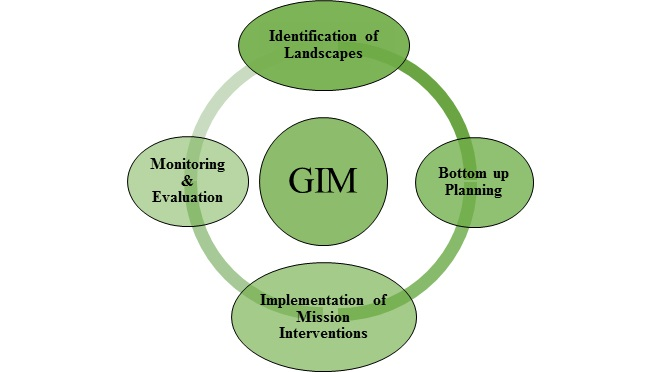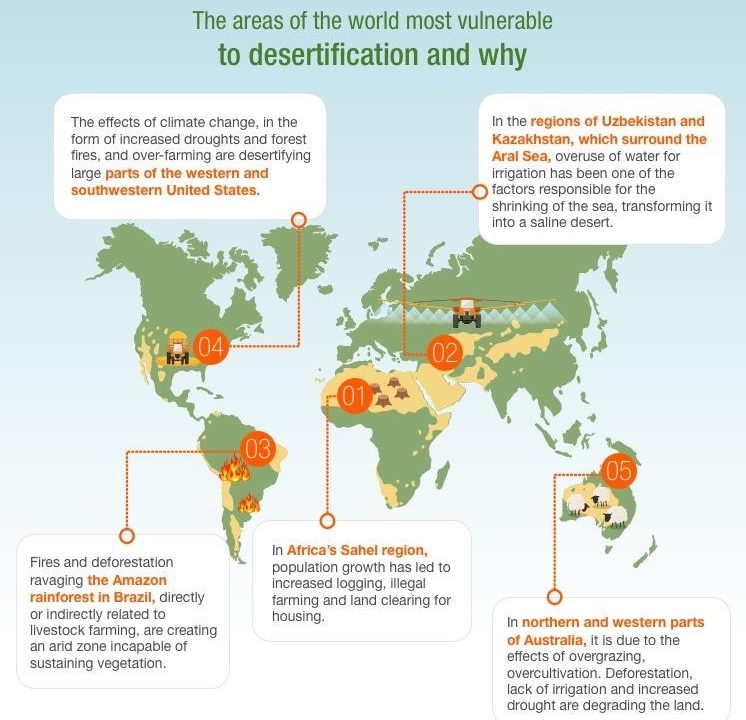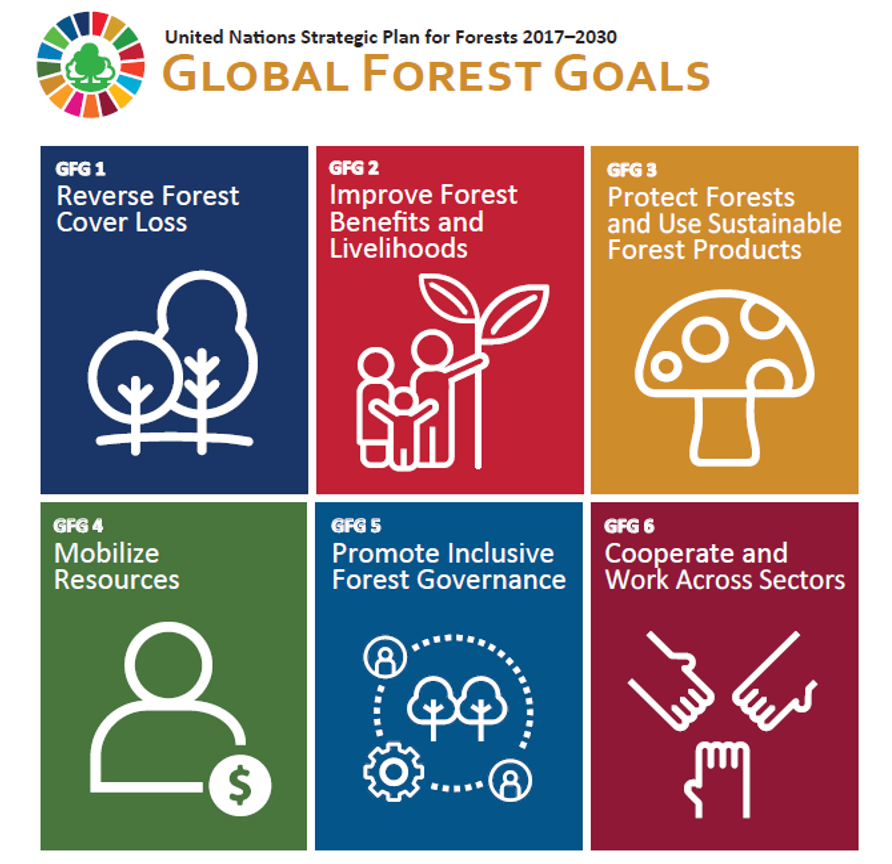Biodiversity & Environment
Sansad TV Vishesh: Save Forest
- 30 May 2024
- 17 min read
For prelims: United Nations Forum on Forests (UNFF), UN Strategic Plan for Forests, forest management, Green Credit Program, UN Economic and Social Council, Environmental sustainability, Inclusive growth, Productivity, "Forest Principles" and Agenda 21 in 1992, 2030 Agenda for Sustainable Development., ISFR 2021, National Action Plan on Climate Change, (NAPCC), Compensatory Afforestation Fund (CAMPA) Western Ghats, Forest Dwellers (Recognition of Forest Rights) Act,2006
For mains: Discuss the Issues and Challenges associated in Saving Forest in India.
Why in News?
Recently, India took part in the 19th Session of the United Nations Forum on Forests (UNFF) held in New York and this session addressed the urgent need to save forests globally.
What are the Key Highlights of the 19th United Nations Forum on Forests (UNFF)?
- Focus Areas:
- There's a focus on engaging local communities in forest management and enhancing the visibility of the benefits of forests
- Forest Coverage:
- Forests are vital for biodiversity, ecosystem balance, and mitigating climate change effects, covering 31% of global land area.
- India's Forest Report:
- India's forest report highlights increases in forest and tree cover area, mangrove area, and carbon stock, showcasing conservation efforts and ranking third globally in increasing forest area.
- India’s Efforts:
- India emphasised biodiversity and wildlife conservation, celebrating milestones like the Tiger Project and Elephant Project and launched the Green Credit Program to incentivise tree plantation and land restoration.
- UNFF 19 Declaration:
- It concluded with a declaration to halt deforestation, forest degradation, and land degradation by 2030, adopting the UN Strategic Plan for Forests.
What is the United Nations Forum on Forests (UNFF) and its Key Milestones?
- About:
- It is an intergovernmental policy forum established in 2000 by the United Nations Economic and Social Council (UNESCO), the UNFF boasts universal membership, comprising all Member States of the United Nations
- It is dedicated to advancing the "management, conservation, and sustainable development of all types of forests" and to fostering enduring political commitment towards this goal.
- Key Milestones:
- The UN Conference on Environment and Development adopted the "Forest Principles" and Agenda 21 in 1992.
- The Intergovernmental Panel on Forests (1995) and the Intergovernmental Forum on Forests (1997) are formed to implement the Forest Principles from 1995 to 2000.
- UNFF was established as a functional commission of the (UNESCO) in 2000.
- UNFF agreed upon four Global Objectives on Forests in 2006 and it aims to
- Reverse the loss of forest cover worldwide through Sustainable Forest Management (SFM).
- Enhance forest-based economic, social, and environmental benefits.
- Increase significantly the area of sustainably managed forests.
- Reverse the decline in official development assistance for SFM and mobilise increased financial resources for its implementation.
- UNFF agreed upon four Global Objectives on Forests in 2006 and it aims to
- UNFF adopted the UN Non-Legally Binding Instrument on All Types of Forests (Forest Instrument) in 2007 which aims to adopt a decision on financing for sustainable forest management, prompting the creation of a Facilitative Process to aid countries in reversing a 20-year decline in forest financing.
- Initially focusing on Small Island Developing States (SIDS) and Low Forest Cover Countries (LFCCs) in 2009.
- The United Nations Forum on Forests (UNFF) was designated as the International Year of Forests with the theme "Forests for People" in 2011.
What is the United Nations Strategic Plan for Forests (2017-2030)?
- Ratification: It was ratified during a special session of the UN Forum on Forests in January 2017, this historic agreement sets forth an ambitious vision for global forests by 2030.
- Aim: It aims to advance sustainable forest management and bolster the role of forests and trees in achieving the 2030 Agenda for Sustainable Development.
- One notable objective is to expand the global forest area by 3% by 2030, equivalent to a growth of 120 million hectares, an expanse greater than twice the size of France.
- Six Global Forest Goals:
- Goal 1: Reversing the loss of forest cover worldwide through sustainable forest management approaches, including protection, restoration, afforestation, and reforestation.
- Goal 2: Enhancing the economic, social, and environmental benefits derived from forests, with a focus on improving the livelihoods of forest-dependent communities.
- Goal 3: Significantly increasing the area of protected forests worldwide and promoting sustainably managed forest areas.
- Goal 4: Mobilising new and additional financial resources from all sources to support sustainable forest management and enhance scientific and technical cooperation and partnerships.
- Goal 5: Promoting governance frameworks conducive to implementing sustainable forest management practices.
- Goal 6: Strengthening cooperation, coordination, coherence, and synergies on forest-related issues across all levels of governance.
- Principles of the 2030 Agenda: This goal is rooted in the principles of the 2030 Agenda, the plan acknowledges that substantial transformation demands resolute, collaborative efforts, both within and beyond the framework of the United Nations.
What are the Various Forest Conservation and Management Initiatives in India?
- India State of Forest Report (ISFR) 2021: The Forest Survey of India (FSI) in Dehradun conducts biennial assessments of forest cover.
- The latest ISFR 2021, reveals India's forest and tree cover at 8,09,537 square kilometres, constituting 24.62% of the country's geographical area, marking a positive increase of 2261 square kilometres compared to ISFR 2019.
- Initiatives for Promoting Forest Cover:
- National Mission for a Green India:
- The National Mission for a Green India was launched in February 2014 and is one of the eight Missions under the National Action Plan on Climate Change (NAPCC).
- Its primary aim is to protect the biological resources of the nation and the livelihoods connected with them from the threats posed by adverse climate change.
- Over the past five years, Rs. 755.28 Crores has been allocated to seventeen States and one union territory for supporting afforestation endeavours.

- National Afforestation Programme (NAP):
- NAP is geared towards the rejuvenation of degraded forests and adjacent areas, it is now amalgamated with the Green India Mission.
- It has been implemented since 2000 for the afforestation of degraded forest lands.
- National Action Programme to Combat Desertification:
- Formulated in 2001, this program aims to tackle the growing problem of desertification and implement necessary measures.
- It is overseen by the Ministry of Environment, Forest and Climate Change.
- Nagar Van Yojana (NVY):
- It was introduced in 2020 and targets the establishment of 600 Nagar Vans and 400 Nagar Vatika in urban and peri-urban regions by 2024-25.
- This initiative aims to augment green cover, conserve biological diversity, and enhance the quality of life for urban inhabitants.
- Compensatory Afforestation Fund Management and Planning Authority (CAMPA):
- It was utilised by States/UTs for compensatory afforestation to counterbalance forest land diversion for developmental projects.
- 90% of the CAF funds are allocated to states, while the Centre retains 10%.
- Forest Conservation Act, 1980:
- It stipulated that the central permission is necessary to practice sustainable agro-forestry in forest areas and Violation or lack of permit was treated as a criminal offence.
- It targeted to limit deforestation, conserve biodiversity and save wildlife.
- National Forest Policy, 1988:
- National Forest Policy, emphasises integrating climate change mitigation and adaptation measures into forest management practices.
- It stresses building resilience to climate change, particularly among forest-dependent communities.
- Scheduled Tribes And Other Traditional Forest Dwellers (Recognition Of Forest Rights) Act, 2006:
- Forest Dwellers (Recognition Of Forest Rights) Act, 2006 recognises the rights of the forest-dwelling tribal communities and other traditional forest dwellers to forest resources, on which these communities were dependent for a variety of needs, including livelihood, habitation and other socio-cultural needs.
- National Mission for a Green India:
What is Forest and Its Classification?
- Definition:
- The term 'forest' lacks a specific definition in any Central Forest Act, such as the Indian Forest Act (1927) or the Forest Conservation Act (1980).
- The Central government has not established any criteria to precisely define what constitutes a forest.
- Under the Indian Forest Act of 1927, states have the authority to designate Reserved Forests within their territories.
- It is the responsibility of individual states to determine their own definition of forests, as mandated by a Supreme Court ruling known as the T.N. Godavarman Thirumulpad vs the Union of India 1996 judgement.
- The term 'forest' lacks a specific definition in any Central Forest Act, such as the Indian Forest Act (1927) or the Forest Conservation Act (1980).
- Classification of Forest:
- Reserved Forests Category:
- It is under direct government supervision, Reserved Forests prohibit public entry for commercial cattle grazing purposes and the total area under this category is 4,34,853 square kilometres.
- Protected Forests Category:
- It is managed by the government, and protected forests permit local communities to collect forest produce and engage in cattle grazing without causing significant damage, the total area under this category is 2,18,924 square kilometres.
- Unprotected Forest Category:
- It is considered an Unclassified forest where there are no restrictions on tree cutting or cattle grazing and the total area under this category is 1,13,642 square kilometres.
- Wasteland:
- As per the Wasteland Atlas 2019 published by the Ministry of Rural Development, the total wasteland in the country covers 5,57,665.51 square kilometres.
- Wasteland refers not to desertified land, but to land that is unused for agriculture, commercial purposes, or designated as forest land
- Reserved Forests Category:
What is the Importance of Forest Conservation in India?
- Economic Contribution:
- Indian forests contribute significantly to the economy through timber, non-timber forest products, and tourism.
- Bamboo forests in the Northeastern region serve as a major source of livelihood for local communities, while national parks and wildlife sanctuaries attract millions of tourists annually.
- Ecosystem Conservation:
- Indian forests offer crucial ecosystem services such as water regulation, soil conservation, and carbon sequestration.
- For instance, the forests in the Western Ghats play a vital role in regulating the water cycle in southern states and preventing soil erosion.
- Biodiversity Hotspot:
- India boasts rich biodiversity, with numerous plant and animal species endemic to its forests.
- The Sundarbans mangrove forests in the Bay of Bengal, for instance, are home to the iconic Royal Bengal tiger.
- Cultural and Spiritual Value:
- Forests hold immense cultural and spiritual significance for many Indian communities, forming an integral part of their livelihoods and cultural traditions.
- For example, the Gond tribes of Madhya Pradesh have deep-rooted connections to their forest habitats.
What are the Different Challenges Related to Forest Conservation?
- Area Identification and Availability:
- Lack of definite guidelines for selecting degraded areas and difficulty in identifying suitable areas for restoration, especially in diverse agro-climatic zones.
- Stakeholder Conflict:
- Conflicting interests among stakeholders, including villagers, community leaders, and government/non-governmental organisations.
- Financial Constraints:
- Inadequate funding for restoration activities, stakeholder engagement, and livelihood support and high costs of restoration projects hinder scalability and long-term success.
- Poverty and Ecological Degradation:
- The interconnectedness between poverty and forest degradation affects approximately 275 million people, with 21.9% of India's population living below the poverty line and depending on forests for subsistence.
- Awareness and Understanding:
- Lack of awareness about the importance of forest conservation and sustainable management practices and insufficient understanding of the ecological significance of forests and their impact on livelihoods.
Way Forward
- Incorporating Local Communities in Forest Management:
- Establishing a network of community-managed forests empowers local communities by entrusting them with the responsibility of safeguarding and overseeing their nearby forests.
- This approach fosters a sense of ownership among community members and encourages their active participation in forest conservation efforts.
- Encouraging Sustainable Forestry Practices:
- Promoting sustainable forestry practices such as selective logging and reforestation ensures that forests are managed in a manner that preserves their ecological integrity.
- By adopting these practices, forests can be sustainably utilised while maintaining their biodiversity and ecosystem services.
- Utilising Technology for Conservation:
- Leveraging technology like remote sensing and Geographic Information Systems (GIS) aids in monitoring forest cover, detecting forest fires, and identifying areas requiring conservation efforts.
- Additionally, conducting potential resource mapping in unexplored forest areas enables their scientific management and sustainable resource extraction, thereby ensuring forest density and health.
- Establishing Dedicated Forest Corridors:
- Creating dedicated forest corridors facilitates the safe movement of wildlife within and across states, preserving their habitats from external disturbances.
- These corridors promote peaceful coexistence between humans and wildlife while safeguarding biodiversity and ecosystem connectivity.
- Valuing Forest-Based Products:
- Recognising the value of forest-based products incentivises communities to protect forests in exchange for better prices for resources such as Sal seeds, Mahua flowers, or Tendu leaves.
UPSC Civil Services Examination Previous Year Question (PYQ)
Prelims
Q. At the national level, which ministry is the nodal agency to ensure effective implementation of the Scheduled Tribes and Other Traditional Forest Dwellers (Recognition of Forest Rights) Act, 2006? (2021)
(a) Ministry of Environment, Forest and Climate Change
(b) Ministry of Panchayati Raj
(c) Ministry of Rural Development
(d) Ministry of Tribal Affairs
Ans: (d)
Q. A particular State in India has the following characteristics: (2012)
- It is located on the same latitude which passes through northern Rajasthan.
- It has over 80% of its area under forest cover.
- Over 12% of forest cover constitutes the Protected Area Network in this State.
Which one among the following States has all the above characteristics?
(a) Arunachal Pradesh
(b) Assam
(c) Himachal Pradesh
(d) Uttarakhand
Ans: (a)
Mains
Q. “The most significant achievement of modern law in India is the constitutionalization of environmental problems by the Supreme Court.” Discuss this statement with the help of relevant case laws. (2022)









